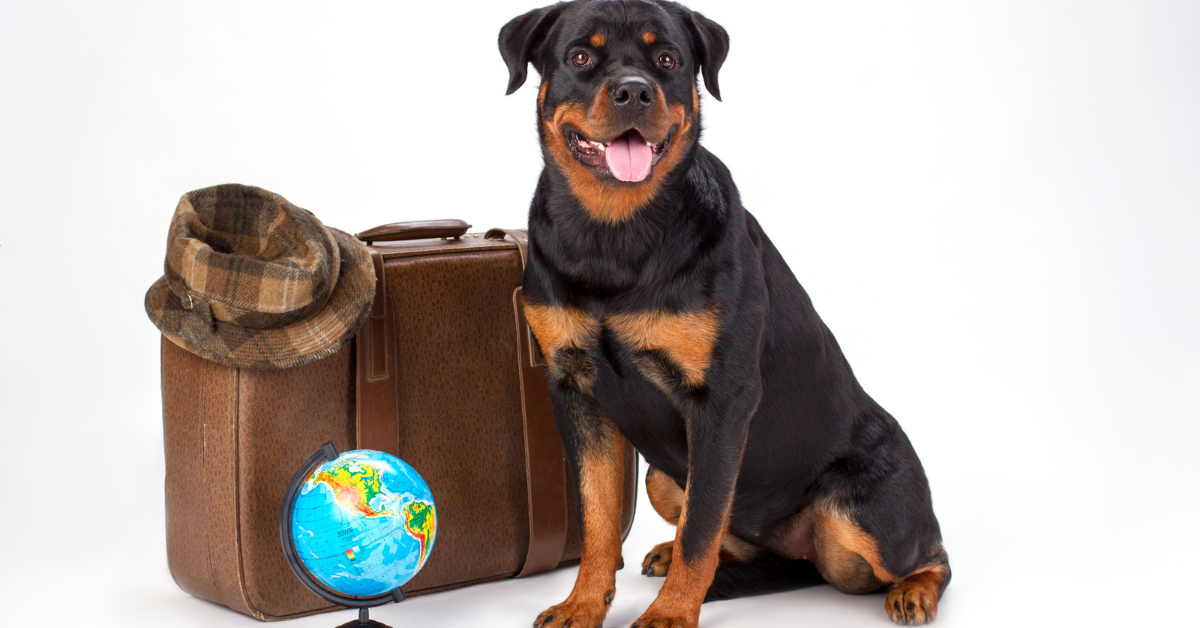Can My Dog Understand Me?

Have you ever wondered if your dog could understand what you're saying? Unfortunately, there isn't a simple yes or no answer to this question. But, if you're wondering what dogs hear and the best ways to communicate with them, keep reading!
DOGS HAVE GREAT HEARING
First, it's important to note that a dog's sense of hearing is one of their superpowers. Dogs hear twice as many frequencies as humans do. You may already know this since dogs are more sensitive to high-pitched sounds. They can also hear noises that are from far greater distances than what people can hear. However, even though dogs can hear better than we can, does that mean that they can understand us?
Hearing doesn't necessarily have to do with comprehension. Just because an animal may be able to hear sounds that we don't hear doesn't mean that they understand the language we are speaking the messages we are trying to convey, or even the context of sounds they register. However, dogs are unique in that their listening behaviors are quite similar to that of humans. In other words, dogs don't only listen to what is being said, but they also listen to how it is being said.
HUMAN BRAINS AND DOG BRAINS
In humans and dogs alike, the left hemisphere of the brain is the part that is responsible for processing verbal messages. When something is said to us (or our dogs), this is the side of the brain that is making sense of the words that are being spoken. The right hemisphere of the brain is what processes things like vocal inflection and intonation, giving us more emotional context to what is being said. Dogs can process this as well! If you say something to your dog in an upbeat tone, they are likely to get excited and wag their tail, whereas if you say something in a stern voice, they may cower and sulk. Dogs use both hemispheres of the brain to process what is being said to them, similarly to how humans do.
WHAT WORDS DOES MY DOG UNDERSTAND?
While dogs may understand words, they are likely unable to comprehend full sentences. There may be times when it seems like they are reacting to what you are saying, but, likely, they are only picking up on the one word they recognize such as "treat" or "walk." Repetition and associations are important when it comes to your dog being able to understand words.
Facial expressions and body language also play a factor in what your dog understands. Have you ever smiled at your dog to find them looking at you and wagging their tail? Or does your dog seem concerned about you when you're upset? These are some signs that your dog is in tune with your body language and emotions. Many dogs intuitively pick up on their owner's body language and facial expressions, and this can be helpful to keep in mind when you're trying to communicate and interact with your pup.

HOW TO INCREASE YOUR DOG'S VOCABULARY
If you've ever wondered if you can increase your dog's vocabulary, you'll be excited to learn that you can! The average dog can learn up to 165 words, while certain breeds can learn upwards of 250, according to animal behaviorist, Stanley Coren. This means that your dog likely has plenty of capacity to learn some new words!
It's a good idea to teach your dog words that they will hear regularly or words that you know would be helpful for them to understand. A few ideas of words to teach your dog are specific food items, toys, locations, actions, or names of people they see regularly.
So, what's the best way to get started? Because dogs learn by repetition and association, teach them daily and when it makes sense. For example, if you're playing with a specific toy or giving them a specific food, hold it up and show it to them while saying the name of the item a few times. Emphasize the word and use an upbeat inflection while you speak. Because it's already an object they're excited about, speaking in a positive tone will help them make a positive association. Do this a few times a day for a few days so that they get the hang of it and learn what to associate with the new word.
While an expanded vocabulary isn't the highest priority when it comes to having a dog, increased communication levels and the one-on-one time involved in the process can lead to a deeper, more grounded relationship with your dog.
Sources:
- https://www.starkey.com/blog/articles/2017/11/Can-my-dog-understand-me
- https://vcahospitals.com/know-your-pet/eavesdropping-dogsdo-dogs-understand-our-conversations
- https://www.quickanddirtytips.com/pets/dogs/how-much-does-my-dog-understand
- https://unionlakepetservices.com/blog/doggie-lingo-does-my-dog-understand-me
- https://wagwalking.com/sense/can-dogs-understand-human-body-language
Previous article

Next article

Related posts
View all-

Should You Bathe Your Cat? Everything You Need to Know About Cat Hygiene
When it comes to cat hygiene, a common question among cat owners is, "Should you bathe your cat?" Understanding how to care for felines, especially bathing cats properly, is crucial for maintaining their overall health. Most cats are fastidious groomers, but specific scenarios like long-haired cats getting dirty or skin irritations, might require a bath.
Read Article -

How to Fly with a Large Dog: Tips and Tricks
Traveling can be challenging, especially when it involves flying with a large dog. Whether your furry friend is a service dog, therapy dog, or simply a beloved pet, understanding the guidelines set by most airlines is crucial. Read Article -

How to Clean a Dog Crate: An Easy and Helpful Guide
Cleaning a dog crate may seem challenging, but it's essential for the health and happiness of your furry friend. A clean crate ensures a hygienic living space for your dog and contributes to a healthier home environment for everyone. Read Article



